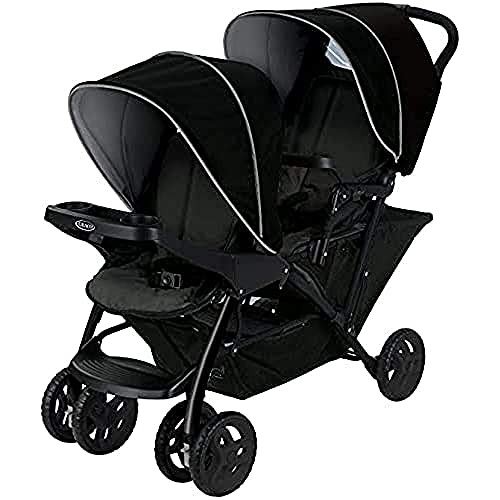7 Useful Tips For Making The Most Of Your Pram Or Pushchair
Pram or Pushchair: A Comprehensive Guide for New Parents
Choosing the ideal mode of transportation for kids is among the first significant decisions brand-new parents deal with. With many options on the marketplace, the dispute between prams and pushchairs can be bewildering. This article will provide comprehensive insights into the differences in between prams and pushchairs, their specifications, benefits and disadvantages, and what to consider before making a purchase.
Comprehending Prams and Pushchairs
At its core, the choice in between a pram and a pushchair lies in their design and planned usage.
Definitions:
Pram: A pram, short for “perambulator,” is developed mainly for newborns. It includes a flat, carrycot-style seat that enables the baby to rest completely flat. Prams are often more glamorous and are intended for transporting infants who are not yet sitting up individually.
Pushchair: A pushchair, also referred to as a stroller, is designed for older infants and toddlers who can sit up. please click the following article have an upright seat and may not recline completely flat, although many models now use adjustable reclining alternatives for convenience.
Key Differences:
Feature
Pram
Pushchair
Age of Use
Newborn to about 6 months
6 months to 4 years or more
Seating Position
Flat, lying down
Upright or slightly reclined
Weight
Typically much heavier
Generally lighter
Mobility
Less portable due to weight
More portable and much easier to fold
Usage Case
Short strolls, leisurely strolls
Daily usage, errands, longer getaways
Advantages and Disadvantages
Pram
Advantages:
- Comfort for Newborns: Provides a flat surface conducive to a newborn's developmental needs.
- Stylish Designs: Many prams featured stylish styles, providing a touch of luxury.
- Storage Space: Sometimes consist of bigger storage options below.
Drawbacks:
- Weight: Generally much heavier and bulkier than pushchairs.
- Restricted Usage: Suitable just for newborns and infants who can not sit up.
Pushchair
Benefits:
- Versatility: Suitable for older babies and toddlers, often accommodating them for a number of years.
- Light-weight and Portable: Easier to fold and transfer, making them ideal for busy parents.
- Configurable Options: Many pushchairs have adjustable seats and attachments for vehicle seats and carrycots.
Disadvantages:
- Comfort for Newborns: Not always ideal for infants in the early months without an appropriate insert.
- Less Luxurious: Often viewed as less luxurious compared to prams.
Making the Right Choice
When it concerns choosing between a pram and pushchair, a number of elements ought to be considered:
1. Lifestyle:
- If moms and dads often make long journeys or opt for walks, a pram might be preferential.
- If they require to navigate through city streets or take public transport, a lightweight pushchair may be preferable.
2. Budget:
Pricing can differ extensively. Understanding your financial limitations will assist concentrate on choices that satisfy both visual and practical criteria.
3. Flexibility:
Some progressive solutions include travel systems that permit moms and dads to shift from a safety seat to a pushchair with the very same base, offering maximum flexibility.
4. Storage Space:
A pram might take up more room in a lorry or in your home, while a pushchair's capability to fold down can be a significant benefit in tighter areas.
Frequently asked questions
Q1: Can I utilize a pushchair for newborns?
A1: Some pushchairs feature bassinet attachments or totally reclining seats, making them appropriate for newborns. Nevertheless, it's vital to check the requirements before use.
Q2: How do I choose the ideal design?
A2: Consider your way of life, budget plan, and the functions you focus on, such as weight, portability, and storage choices.
Q3: Are prams and pushchairs safe for my baby?
A3: Yes, both prams and pushchairs are created with security features. Search for designs with a 5-point harness, durable brakes, and safe and secure frames.
Q4: How long can I utilize a pram for?
A4: A pram is generally ideal up until a baby can sit up unassisted, usually around 6 months.
Q5: What are travel systems?
A5: Travel systems are mixes of a safety seat and a pushchair that work in tandem, permitting easy transitions from cars and truck to pushchair without needing to get rid of the baby.
Choosing in between a pram and a pushchair ultimately boils down to the requirements and way of life choices of each household. Prams provide comfort and design for babies, while pushchairs offer flexibility and ease for older babies and young children. By carefully thinking about specific situations and requirements, parents can make an informed choice that will guarantee safe and enjoyable getaways with their children.
In the end, whether one select a stylish pram or a practical pushchair, the primary objective stays the exact same— guaranteeing comfort and security for the child while assisting in benefit for moms and dads.
